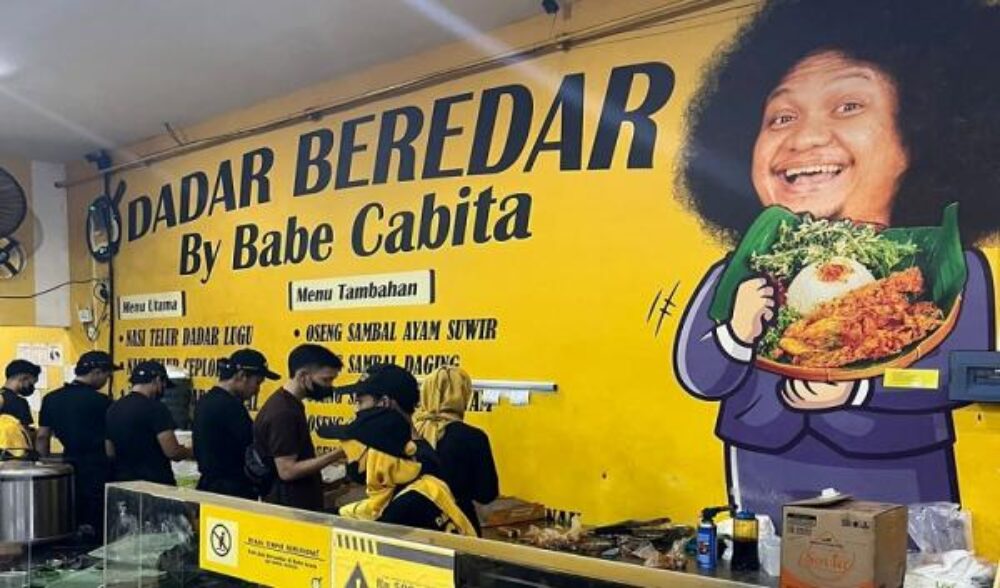Sambal Khas Dadar Beredar: A Spicy Legacy
Origins of Sambal Khas Dadar Beredar
Sambal Khas Dadar Beredar is a cherished spicy condiment that hails from the rich tapestry of Indonesian cuisine, particularly within the regions where Indonesian Malay culture thrives. This delightful sambal, characterized by its vibrant color and explosive flavors, has its roots deeply embedded in traditional cooking practices that date back centuries. Often enjoyed as a side dish, it exemplifies the Indonesian spirit of cooking—bold, vibrant, and deeply connected to local ingredients.
Key Ingredients
The primary components of Sambal Khas Dadar Beredar highlight the essence of Indonesian gastronomy. Fresh red chilies are the star ingredient, imparting not only heat but also a brilliant hue that captures the eye. Garlic, shallots, and candlenuts (or kemiri) contribute aromatic depth and complexity, while lime juice or tamarind introduces a tantalizing acidity that balances the heat. Palm sugar is frequently added to give a hint of sweetness, creating an exemplary harmony of flavors.
Traditional Preparation Method
The preparation of Sambal Khas Dadar Beredar is as important as its ingredients. Traditionally, the blending process starts with roasting the chilies and other vegetables to enhance and deepen their flavors. This step is crucial; the charring not only intensifies the heat but also introduces a subtle smokiness. After roasting, the ingredients are ground together, usually with a mortar and pestle, until a coarse paste forms. This artisanal approach ensures that the sambal retains its chunky texture, allowing for a more impactful flavor experience.
Some recipes may incorporate additional ingredients such as shrimp paste, which adds a distinctive umami flavor. The sambal can be served immediately or allowed to rest, which allows the flavors to meld beautifully.
Variations Across Regions
While Sambal Khas Dadar Beredar maintains a core recipe, it exhibits regional variations that reflect local tastes and available ingredients. For instance, in Java, you might find it richer and thicker, while in Bali, a sweeter version featuring more palm sugar and less heat might prevail.
Western Indonesian renditions often embrace a more intense spiciness, incorporating local chili varieties that pack a considerable punch. Each variation tells a unique story about the cultural influences and agricultural diversity of the region, making sambal a canvas for local pride.
Pairing Suggestions
Sambal Khas Dadar Beredar is incredibly versatile in its serving options. Its fiery kick complements a range of culinary delights, making it an essential companion to rice dishes, grilled meats, and seafood. Traditional Indonesian fare such as fried rice (nasi goreng), grilled chicken (ayam bakar), and fried tofu (tahu goreng) often feature this sambal either drizzled on top or served as a side condiment.
Beyond its traditional pairings, Sambal Khas Dadar Beredar can add an exciting dimension to modern dishes. Using it as a vibrant topping for burgers, integrating it into marinades, or even mixing it into salad dressings can elevate everyday meals with a burst of flavor.
Health Benefits
The ingredients in Sambal Khas Dadar Beredar not only contribute to its signature taste but also offer health benefits. Chilies are known for their capsaicin content, which is associated with metabolism boosting and pain relief. Garlic and shallots are renowned for their immune-boosting properties, while lime juice adds a dose of vitamin C. When enjoyed in moderation, sambal can enhance one’s diet, delivering both flavor and nutritional advantages.
Cultural Significance
Sambal Khas Dadar Beredar is more than just a condiment; it represents a cultural legacy. As a symbol of Indonesian hospitality, it is often prepared for family gatherings, festivals, and celebrations. Serving sambal to guests is seen as a gesture of warmth and generosity, bridging connections and forging bonds. Additionally, sambal-making is often a communal activity, passed down through generations, reinforcing family ties and cultural traditions.
The Global Rise
In recent years, the global appetite for spicy food has sparked a burgeoning interest in sambal beyond Southeast Asia. From food trucks to upscale restaurants, the versatility and flavor of Sambal Khas Dadar Beredar have captured the attention of food enthusiasts worldwide.
Ingredient accessibility has further propelled its popularity, with many supermarkets now stocking essential Indonesian ingredients and ready-made sambals. As consumers become more adventurous, this spicy legacy continues to spread, inviting food lovers to discover the vibrant culture and culinary history intertwined in every spoonful.
Conclusion
Sambal Khas Dadar Beredar stands as a testament to Indonesia’s vibrant culinary heritage. With its bold flavors, rich history, and growing international appeal, this sambal delights and inspires chefs and home cooks alike. As you journey through hosts of new recipes and cultural explorations, incorporating Sambal Khas Dadar Beredar into your dining experience means savoring a piece of Indonesia’s heart and soul, forever steeped in spice.
Practical Tips for Home Cooks
-
Adjusting Spice Levels: If you’re sensitive to heat, consider using milder chili varieties and adjusting the proportion to suit your spice tolerance.
-
Storage: Sambal can be stored in an airtight container in the refrigerator for up to two weeks, making it a convenient addition to your weekly meal prep.
-
Experiment with Flavors: Feel free to modify the sambal by adding fresh herbs like cilantro or basil for aromatic variations, or even incorporating roasted peanuts for added crunch.
-
Make it Vegan: You can easily make a vegetarian version of Sambal Khas Dadar Beredar by omitting shrimp paste, without sacrificing its depth of flavor.
Immerse yourself in the spicy legacy of Sambal Khas Dadar Beredar, and experience a taste of Indonesia right from your kitchen.

